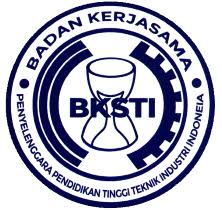Usulan Penurunan Tingkat Kecacatan Produk Pelat Baja dengan Metode Six Sigma
DOI:
https://doi.org/10.30656/intech.v3i2.877Keywords:
DPMO, Fish bone diagram, Pareto diagram, Six SigmaAbstract
This study aims to maximize the decline in the level of product defects to lead to zero defects. Researchers use the six sigma method through 5 stages of completion, namely, define, measure, analyze, improve, and control. Based on the results of the study it can be concluded that the sigma level and the value of DPMO (Defect per Million Opportunities) of the company amounted to 3.47 with possible damage of 24,239 sheets for one million productions. After further analysis using the Pareto diagram, it found that the cutting fault transfer defect was the most common with a percentage of damage of 43%. And based on the results of the analysis of fishbone diagrams, it can be seen that the main factors causing contamination in the production process come from the worker factor (human), followed by machine factors, material, and work methods. The proposed improvements that can be made by the company include updating existing methods and SOPs (standard operating procedures) and monitoring the operator's performance and developing knowledge and planning proper maintenance scheduling.
Downloads
References
Banuelas, R., Antony, J., & Brace, M. (2005). An application of Six Sigma to reduce waste. Quality and Reliability Engineering International, 21(6), 553–570.
Breyfogle, F. W. (2003). Implementing six sigma: smarter solutions using statistical methods. John Wiley & Sons.
Gaspersz, V. (2001). Total Quality Management, PT. Jakarta: Gramedia Pustaka Utama.
Ghanimata, F., & Kamal, M. (2012). Analisis pengaruh harga, kualitas produk, dan lokasi terhadap keputusan pembelian (Studi pada Pembeli Produk Bandeng Juwana Elrina Semarang). Fakultas Ekonomika dan Bisnis.
Goh, T. N., Low, P. C., Tsui, K.-L., & Xie, M. (2003). Impact of Six Sigma implementation on stock price performance. Total Quality Management & Business Excellence, 14(7), 753–763.
Kumar, U. D., Nowicki, D., RamÃrez-Márquez, J. E., & Verma, D. (2008). On the optimal selection of process alternatives in a Six Sigma implementation. International Journal of Production Economics, 111(2), 456–467.
Pheng, L. S., & Hui, M. S. (2004). Implementing and applying Six Sigma in construction. Journal of Construction Engineering and Management, 130(4), 482–489.
Ranjan Senapati, N. (2004). Six Sigma: myths and realities. International Journal of Quality & Reliability Management, 21(6), 683–690.
Rohimudin, R., Dwiputra, G. A., & Supriyadi, S. (2016). Analisis Defect pada Hasil Pengelasan Plate Konstruksi Baja dengan Metode Six Sigma. Jurnal INTECH Teknik Industri Universitas Serang Raya, 2(1), 1–10.
Trihendradi, C. (2006). Statistik SIx Sigma dengan Minitab: Panduan Cerdas Inisiatif Kualitas. Yogyakarta: CV. Andi Offset.








.png)
.png)
.png)



.png)

.png)
